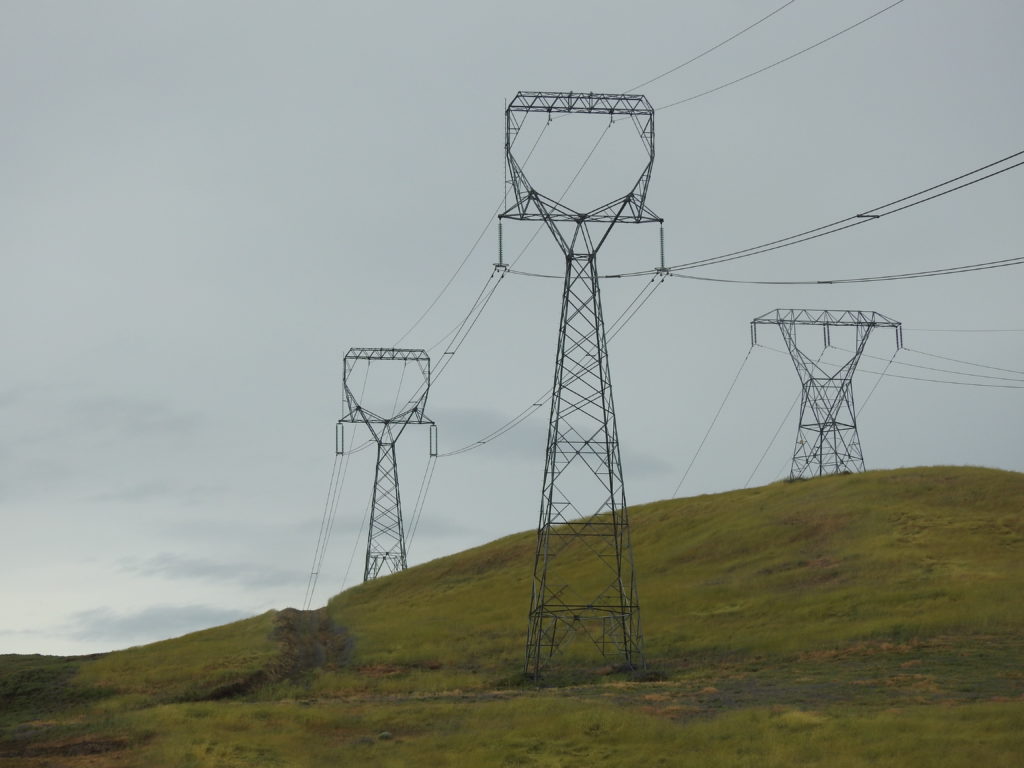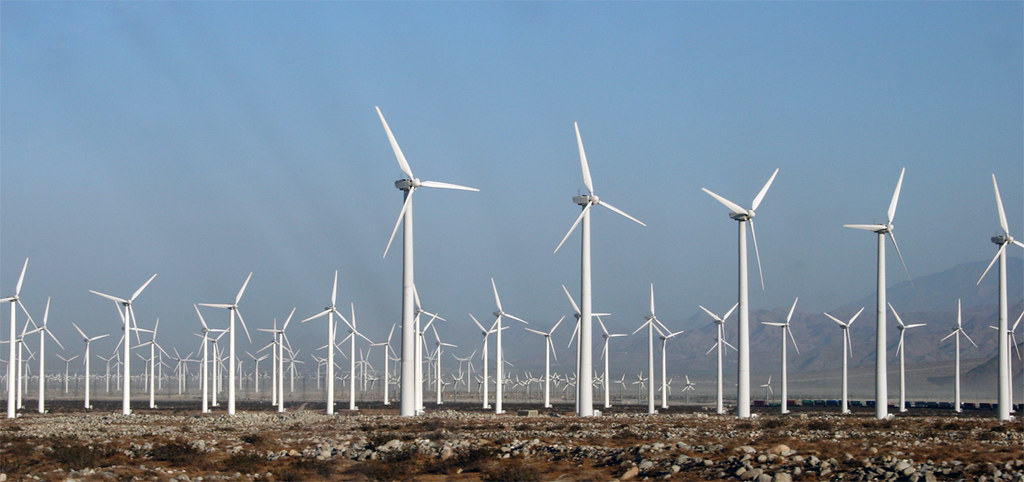In most parts of the world, it takes time, a lot of it, to get the necessary permits to build a new transmission line. While few dispute the benefits of and need for more electric transmission, many oppose the lines to be built. The reasons can be several, but in most cases, it comes down to NIMBY (Not-In-My-Backyard).

Pacific Intertie, a breakthrough transmission system at its time, initially, 1969, with a capacity of 2500 MW. With subsequent expansions the 400 kV HVDC line and the two 500 kW HVAC lines can bring 7900 MW of predominantly hydro power from the Pacific Northwest to the Los Angeles area. Photo by the author.
The common denominator for transmission projects moving ahead is thorough planning and persistence in working with public opinion and permitting authorities. For individual projects creativity and unconventional approaches can be effective enabling the project to happen. Below are some ongoing projects worth watching and learning from.
CONTINUE READING >>
The unprovoked Russian war against Ukraine has resulted in an electric energy crisis in Europe, in particular in Germany. Because of the escalation between sanctions and gas deliveries, Russia on September 2 for an indefinite time shut down Nord Stream 1, the main pipeline for the natural gas deliveries to Germany. It triggered higher electricity prices not only in Germany but all the surrounding countries. The indefinite time was further extended on September 26 after both Nord Stream 1 and Nord Stream 2 pipelines ruptured after a series of explosions. Added to the serious concerns about exceedingly high electricity prices are now concerns in Germany for the coming winter about grid reliability, as well as for the ability to adequately heat buildings.
However, there is more to the story about the crisis than losing the Russian gas through the Nord Stream pipelines. Germany has been fortunate to be able to import substantial amounts of electricity when short on own generation, but this summer the availability of power to import has been reduced. France, normally the biggest exporter of power in Europe, has had more than half of their nuclear reactors offline due to routine maintenance or to evaluate the risks of corrosion problems. In addition, the record drought in Europe dropped the water levels in many large rivers, not least in France. It reduced the hydro generation as well as put restrictions on the output from some of the nuclear reactors in operation. (The latter is due to limitations of the amount of available/allowed cooling water.)
CONTINUE READING >>
On February 24 Russia started an unprovoked full-scale invasion of Ukraine. It has resulted in colossal damage and sufferings. How the war will end nobody knows, but it seems clear that Ukraine will remain a free, independent, and democratic nation, while Russia will achieve truly little, if anything of its goals.
The war in Ukraine will also have unintended and significant energy and environmental consequences in all Europe. For some countries there will be changes in the direction of their respective energy structures and plans. In other cases, the direction will remain unchanged, but the speed of change will accelerate.
CONTINUE READING >>
From the very start of electricity, supply and demand had to be balanced.
Initially, it could be done by changing the output of the generators. The shifts in load were slow, mostly between day and night, and predictive.
This was the case through VWII, but after the war some fundamental changes, both load as well as of generation, made the balancing more demanding. On the load side the introduction of air conditioning significantly increased the amplitude between the bottom, referred to as the baseload, and the peak of demand. On the generation side nuclear power emerged. These plants had basically no flexibility and had to run all the time. Further, the increasingly large coal plants and the first generations of combined cycle gas turbines (CCGT) had limited flexibility. These generators, so called “baseload generators”, needed to be supplemented with more flexible generation to follow the load, from the baseload all the way to the peak power demand. Hydro power was the main flexible resource.
CONTINUE READING >>
Global warming is a global issue. Recognizing this fact, the international community, starting with the Earth Summit in Rio de Janeiro 1992, has tried to find a comprehensive global solution. Continuing through the Kyoto Protocol of 1997, the Paris Agreement in 2015 and the recently completed (2021) COP26 (the 26th UN Climate Change Conference) in Glasgow, there have been progress. However, the progress seems so far to be more of a deeper understanding of the problem and in setting ambitious targets than reaching a comprehensive solution with all nations committing to firm and specific actions to reduce emissions.
The problem not only remains but keeps growing. Carbon emissions continue to rise and accumulate in the atmosphere. Temperatures are inching up. Some countries have been successful reducing their emissions but taken together the greenhouse gas (GHG) emissions worldwide are increasing.
CONTINUE READING >>
Since 2019 wind has become the largest source of renewable energy in the US. In 2020 wind produced 8.4 % of all the electric energy. There is now more than 120 GW nameplate capacity of wind. Only 0.042 GW (42 MW) nameplate capacity is offshore wind. With an estimated cost at least twice as high as land-based wind and the costs of connecting to the onshore electric grid, at a first glance it would not seem that offshore wind could ever become of any significance.
However, at a closer look, there are strong reasons to believe offshore wind will become substantial with over 10 GW in operation already by 2030.
CONTINUE READING >>
The infamous “battle of currents” 1888-89 between Thomas Edison on one side and Nicolaus Tesla and George Westinghouse on the other side, was about the future of the electric system. Which was the superior technology, Direct Current (DC) or Alternating Current (AC)? AC won, and for over half a century it looked like an outcome with the winner takes all.
CONTINUE READING >>
Achieving “zero carbon emissions” (see footnote) without compromising safety and reliability, while keeping costs affordable, is not a trivial task. Countries that have succeeded or have come close are countries with a dominant portion of hydro power, for example Norway, Island, Costa Rica, Brazil, Canada. Also, countries like France and Sweden, with a mix of nuclear and hydro have achieved over ninety percent of zero emissions.
CONTINUE READING >>
The Global Energy Interconnection Development and Cooperation Organization (GEIDCO) was formed in March 2016. The purpose is to promote the sustainable development of energy worldwide. The vision of the Global Energy Interconnection (GEI) is “a clean energy dominant electric centric modern energy system that is globally interconnected, jointly constructed and mutually beneficial to all. It is an important platform for large scale development, transmission, and consumption of clean energy resources worldwide. In essence, GEI is Smart Grid + UHV (Ultra High Voltage) Grid +Clean Energy.”
CONTINUE READING >>
With more variable generation resources, wind and solar, on the system, the need for more variable load will also increase. It is all about balancing supply and demand. It has been the case since the start of the electric grids. So far, the balancing has largely been achieved by making generation flexible and respond to load. Going forward, this paradigm will need to change by also making the load flexible.

“Wind generators” by BiggerPictureImages.com is licensed under CC BY-NC-ND 2.0
CONTINUE READING >>